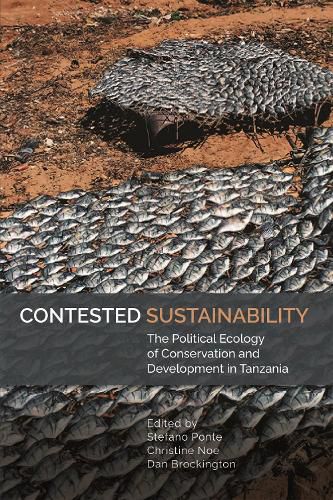Readings Newsletter
Become a Readings Member to make your shopping experience even easier.
Sign in or sign up for free!
You’re not far away from qualifying for FREE standard shipping within Australia
You’ve qualified for FREE standard shipping within Australia
The cart is loading…






New and more complex partnerships are emerging to address the governance natural resources in developing countries. These sustainability partnerships are embedded in broader networks that variously link donors, governments,community-based organizations, non-governmental organizations (NGOs), business, certification agencies and other intermediaries. High expectations and many resources have been invested in these partnerships. Yet, we still do not know whether more sophisticated organizational structures, more stakeholders involved, and more advanced participatory processes have delivered better sustainability outcomes, and if so, in what sectors and under what circumstances.
To fill this knowledge gap, scholars from a range of disciplines analyze the governance of sustainability in three key natural resource sectors in Tanzania: forestry, wildlife and coastal resources. Using innovative methodological approaches, including software-based qualitative analysis of key-informant interviews and focus group discussions, social network analysis and GIS/remote sensing approaches, they examine the emergence, structure and evolution of sustainability partnerships and the broader social networks in which they are embedded. They assess whether co-management with local communities and private and civil society actors - and putatively more participatory processes in the governance of renewable resources - result in more equitable and sustainable livelihoods and environmental outcomes. They compare ‘more complex’ partnerships to relatively ‘simpler’, more traditional top-down and centralized management systems and to instances where sustainability partnerships are not in place. We explain the links between the complexity of these initiatives, their legitimacy, the distribution of benefits and losses that they entail, and the forms of sustainability they produce.
This book is available as Open Access under the Creative Commons license CC-BY-NC-ND.
$9.00 standard shipping within Australia
FREE standard shipping within Australia for orders over $100.00
Express & International shipping calculated at checkout
New and more complex partnerships are emerging to address the governance natural resources in developing countries. These sustainability partnerships are embedded in broader networks that variously link donors, governments,community-based organizations, non-governmental organizations (NGOs), business, certification agencies and other intermediaries. High expectations and many resources have been invested in these partnerships. Yet, we still do not know whether more sophisticated organizational structures, more stakeholders involved, and more advanced participatory processes have delivered better sustainability outcomes, and if so, in what sectors and under what circumstances.
To fill this knowledge gap, scholars from a range of disciplines analyze the governance of sustainability in three key natural resource sectors in Tanzania: forestry, wildlife and coastal resources. Using innovative methodological approaches, including software-based qualitative analysis of key-informant interviews and focus group discussions, social network analysis and GIS/remote sensing approaches, they examine the emergence, structure and evolution of sustainability partnerships and the broader social networks in which they are embedded. They assess whether co-management with local communities and private and civil society actors - and putatively more participatory processes in the governance of renewable resources - result in more equitable and sustainable livelihoods and environmental outcomes. They compare ‘more complex’ partnerships to relatively ‘simpler’, more traditional top-down and centralized management systems and to instances where sustainability partnerships are not in place. We explain the links between the complexity of these initiatives, their legitimacy, the distribution of benefits and losses that they entail, and the forms of sustainability they produce.
This book is available as Open Access under the Creative Commons license CC-BY-NC-ND.